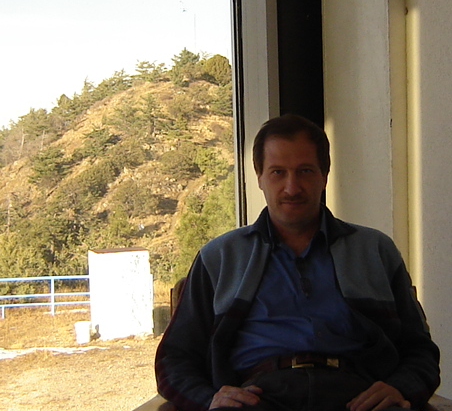
Welcome to my page!
My name is Anton A. Lipovka. I have been working as a professor for the physics research department of the Sonora University since 1999.
I teach the following courses of lectures to university students:
Classic mechanics, Spectroscopy, General theory of relativity, Differential geometry, Mathematical methods of theoretical physics, Quantum optics, Quantum field theory.
Since 1990, I have been engaged in molecular spectroscopy, cosmology, astrophysics, the problem of the formation of primordial structures in the Universe, distortions of the CMBR, and some branches of theoretical physics.
Let me suggest to you kind attention some of the recent results that I feel worth mentioning.
2005 yr. With my colleagues, I have proposed an improved primary gas cooling function responsible for the formation of the first stars in the universe. “The cooling function of HD molecule revisited” see also ArXiv
2013 yr. It was shown that Planck’s constant is an adiabatic invariant of the Electromagnetic field propagating in the expanding Universe, which is determined by the adiabatic change in the geometric parameters of the manifold. The calculated value of h=6.6 x 10^(-27) erg sec. coincided with the laboratory measured Planck’s constant up to the second decimal place, i.e. accurate to measurement errors of the Hubble constant and the cosmological constant. Links for Planck constant as adiabatic invariant characterized by Hubble’s and cosmological constants: Article published in the journal, see also ArXiv or HAL
2016 yr. The electromagnetic nature of the quantum potential introduced by Bohm was proved. Links for Nature of the Quantum Potential: Article published in the journal, see also ArXiv or HAL
2016 yr. The Planck constant for the Riemannian World was calculated, i.e. for the particular case of symmetric connections. As expected, it turned out to be 1/3 more than the previously calculated value for the complete torsion geometry. Links for Variation of the fine-structure constant caused by expansion of the Universe: Article published in the Modern Physics Letters A, see also ArXiv or HAL.
In the same 2016 , complete electrodynamics was written out (taking into account the adiabatic expansion of the Universe), which is a generalization of Maxwell’s electrodynamics for the case of micro-objects (quantum objects). Thus, for the first time, a quantum theory was built without the need for an axiomatic introduction of both wave functions and Planck’s constant. In this work, we first calculated the Planck constant in a new, independent and maximally correct way, and after that we wrote out equations describing the system of charges, regardless of their size and speed. The result was a detailed explanation of the Aharonov-Bohm effect, a solution to the problem of the collapse of the wave function, and a solution to the problem of the discrepancy between zero energies and the cosmological constant. Links for Physics on the adiabatically changed Finslerian manifold and cosmology: Article published in the journal, see also ArXiv or HAL.
In 2018, the problem of dark matter was solved. The need to introduce dark matter to explain galactic rotation curves has arisen due to incorrect methods for calculating the dynamics of gas in the disks of galaxies. Until now, methods of classical mechanics and hydrodynamics have been applied to describe the dynamics of galactic disks. However, both the first and second methods have severe limitations of applicability and cannot be used to describe very rarefied gas in the outer part of galactic disks (where “non-physical”, or non-Keplerian rotation curves are observed). It is precisely because of these errors that the need arose to compensate for incorrect calculations by introducing dark matter. If correct methods and equations are applied, there is no need to introduce dark matter. The resulting paper “Gas kinetics of galactic disk explains rotation curves of S-type galaxies without a need for Dark Matter” was published in Int.J.Mod.Phys.A.